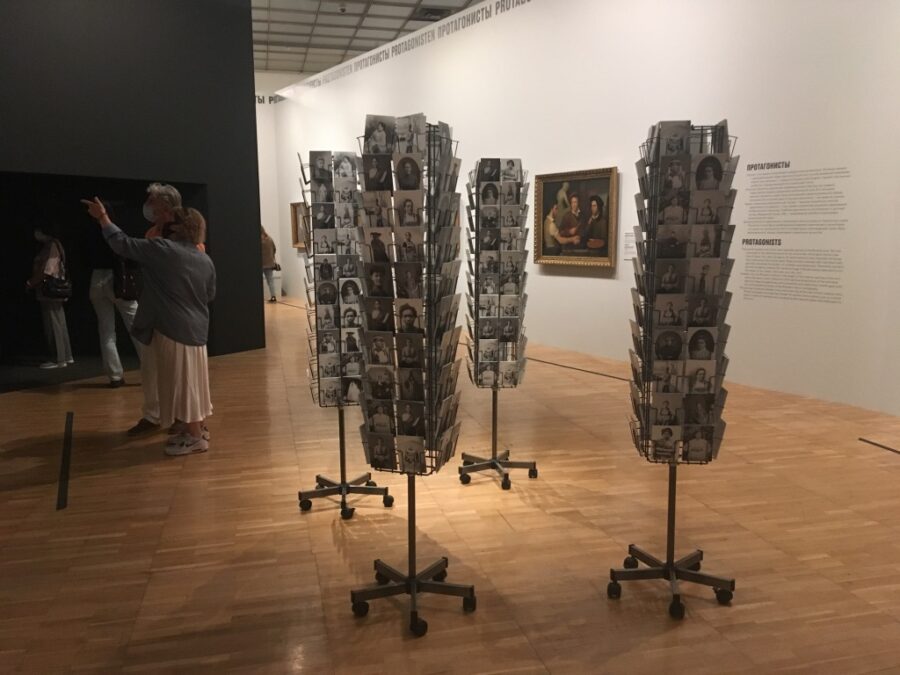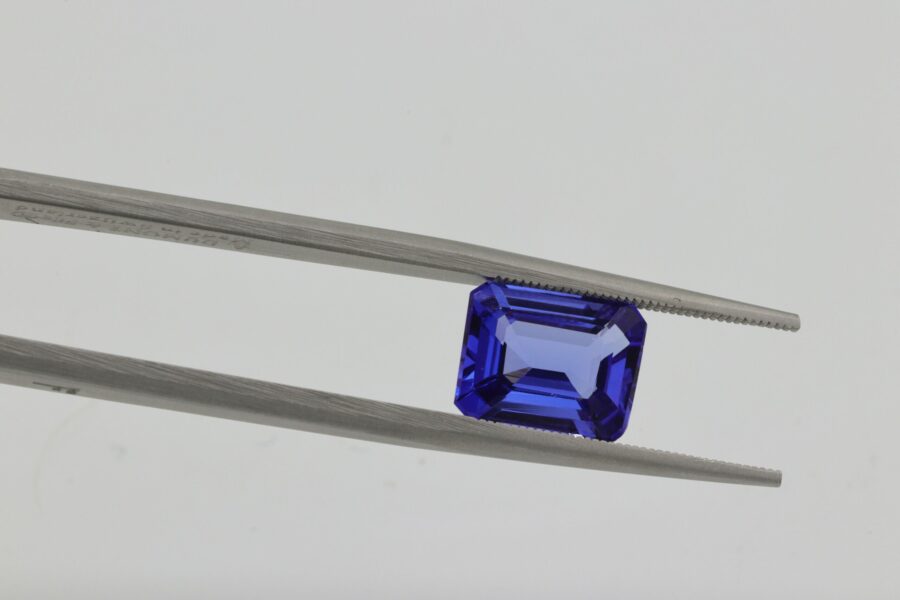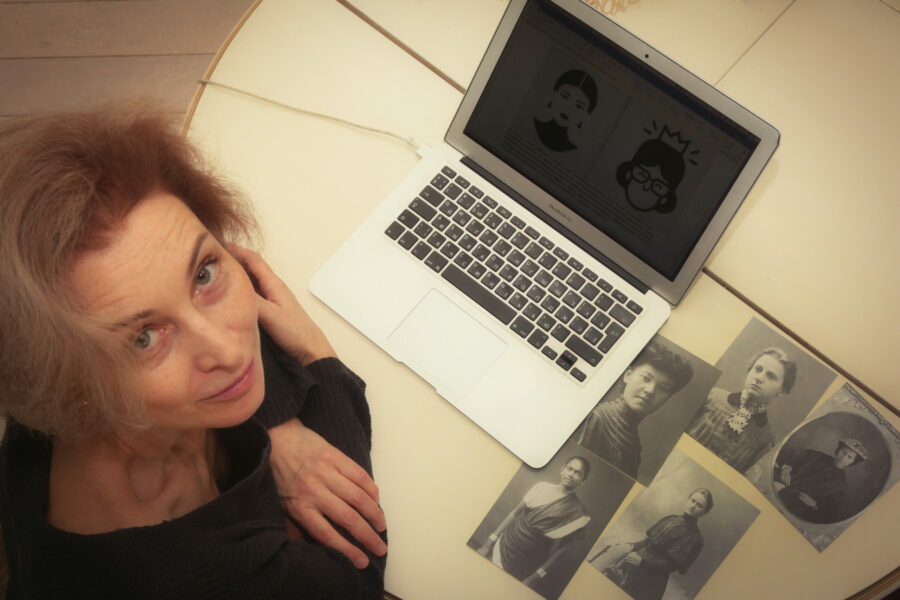Woman To Go
The exhibition “Romanticism in Germany and Russia” in New Tretyakov gallery last summer overwhelmed me with the variety of the themes: freedom as a dream made true, loss of freedom and bitter reflections on that loss; beauty and search for divine truth; celebrating friendship and fraternity. Looking at individual and group portraits of the19th century celebrities I found it hard to tell the Russians from the Europeans.
Mathilde ter Heijne’s project, the black-and-white postcards, have bridged the kaleidoscope of the exhibition with my life and my contemporary project: studying women’s demand for financial services in Central Asia.
The postcards were displayed on spinning racks, one could take them for free, “to go”. The portraits are photographs of unknown women who lived during certain time – from the late 1830s when daguerreotype photography began, to the 1920s. On the back side of each postcard there is a story unrelated to the portrait – the story of another woman.

The project was launched in the early 2000s in Berlin. For the Moscow exhibition, Mathilde ter Hein prepared a new series, about women in Russia, with stories in Russian.
I took two dozen postcards; some serve me as bookmarks, others I am giving away, as the author probably wants it, so that the interactive project can reach and inspire more people.
Eastern Women at Home
The work I was doing last summer was aimed at tangible results like analysis and reports but also had a lot to do with faces and stories. Online discussions with Kyrgyz, Uzbek, Tajik women entrepreneurs covered business, trade, trainings, fears, joys, hopes, goals, values, priorities… Our participants represented a wide range of businesses, from traditional like cooking, catering, clothes manufacturing to fitness centres and language and IT-literacy courses.
They were very different, my counterparts. Some ladies had shawls around their heads, not in a religious fashion, but with the ends tied back. I find this clothing item very beautiful: the shawls are made of fine colorful textile but they are practical. I think women wearing shawls tied back look busy and organized, and also free and independent.
It was impossible to remain impartial and calm, asking questions and listening to the answers. Sometimes it was hard to fight back tears. For a long time after these online meetings, participants’ words were spinning in my head.
“You know what is happening now in Afghanistan, it is just next door, and I am scared.” “My family life… it is my husband’s infidelity that keeps me awake at night”. “In our capital city, those officials in government offices, men… they made me feel so bad last time when I went to renew my licence – they were saying that I should go home to take care of my husband, that money is more important to me than family, that women should not be allowed to run a business. They make me cry… No, it is not possible to complain. If I would file an official complaint, it would be even worse, you would ruin your reputation and cause trouble for one’s family.” “I am fighting with cancer and I am afraid of getting coronavirus, what if I fell so ill that I couldn’t repay my bank loan… I really want to pay off that loan…” “From the time we were little girls we were taught that we should not complain but always smile. You are being told off – you smile, you do not understand what is going on – smile, you feel bad – smile, you are hurt – smile.” “People are littering where they live, desecrating nature. I cannot walk peacefully in the mountains, I pick up litter all the time and come back with huge bags.” “It is the mothers-in-law who want things to be old way, no doubt about it. When my husband tries and helps me with homework, his mother starts to break cups and plates, so angry she gets.”
We laughed together, too. “What do our women want? Two things. First, to lose weight. Second, to learn English.” “You ask how I feel about taking risks… He who does not take risks does not drink champagne, is that what they say in Russian?” “This is Asia, not Russia. Here, people respect business. It is impossible to imagine that dollar rate raising and local prices remaining the same – I saw such thing in Russia at the time of crisis. Here, if the exchange rate of changes in the morning, one see prices changed everywhere in a couple of hours.”
Project participants represented countries of the former Soviet Union. My feeling is, what we have in common is not limited to quotes from Soviet films. These ladies and I share knowledge about economic and social unrest experienced in the past. Resourcefulness is one of our common characteristics, we keep going no matter what happens.
Portraits Against the Backdrop of Mountains and Valleys
My role in the project was to describe three main entrepreneurial groups: first, start-ups that have existed for less than two years, second – stable companies that have been around for more than two years, third – growing businesses, those most interested in additional financing, a key target group for banks. The gallery of group portraits includes six “personas”, two for each group, a full story is here – “What women want”.
Images
My colleagues and I debated over qualitative differences between a growing business and a stable business. They believe that growing businesses are bankable while stable businesses are not too interesting as borrowers. I disagreed, pointing out that life circumstances of owners change and their businesses go through different phases – stability, then growth, or vice versa. Plus, stable businesses might need loans, as working capital and also for new equipment, they often make loyal bank clients.
Looking back, I think it was a good discussion and excellent team work. On the one side, there were my colleagues, educated and entrepreneurial European men, practical risk-takers who trust in reason, structure, ready to bank on growth. On the other side, there was a conservative like me believing that stable business was good enough. The discussion, however, made me remember what I had read on the limits women put on themselves, and finally brought me to a better understanding of the reverse side to stability.
A business that strives for stability can be compared with a house just recently built. Happy owners have dreams about a little guest cottage nearby, and perhaps some other things, but nothing too big in the next couple of years. Only a few pleasant trivialities: a wall-high window in the living room, a summer terrace, a staircase…
Several times I heard women comparing business with a child that a mother brings into the world. The child might not turn out successful and strong, but it’s mother will love it dearly. Whatever problems arise, women entrepreneurs are reluctant just to close business, they want to save as much as possible and keep it running as long as possible.
Finally, the third image: a woman entrepreneur running her stable business can be compared with a precious stone on top of a jewellery box: it shines beautifully but is forever fixed in its golden frame. I thank, in absentia, Abdeltif Khalid, a Moroccan colleague, with whom we discussed challenges of women businesses in March 2019 and who shared the thesis written by his wife: “Women Entrepreneurship in Morocco: approach to personal networks” (L’entrepreneuriat féminin au Maroc : une approche de réseautage personnel”). The author, Madame Fatima Ezzahra Rachdi Ep.Khalid, uses the French word “l’encastrement”, which can be translated as “embedded”, “built in”.

This is a way to describe a choice women entrepreneurs often make with regard to networking: a secure, psychologically comfortable network of contacts, which they do not try to expand, as if they only feel safe when remaining within certain boundaries. Success in business and personal resilience do not necessarily eliminate women’s timid behaviour or insecurity.
As for Central Asia, conventional patterns are important for social communities, plus there might be also personal reasons hidden deep inside. One way or another, the existing boundaries maintain an “old” way: half of the population becomes a support and service group for the other half. Women do the work – men do the negotiations. She owns three shops and manages several manufacturing facilities, she comes to the bazaar to buy textile and can get only a 2 per cent discount; she comes later with her driver who gets a 10 per cent discount. Is haggling truly a man’s business?
What is her power, really?
The variety of bakeries, clothing manufacturing shops, beauty salons is impressive… yet the potential of women entrepreneurship in Central Asia is much bigger. There is a huge demand for agronomists, mathematicians, engineers, IT-technology, transport and logistics professionals. My colleagues and I were keen to understand key opportunities for the growth of women businesses. For individual business owners, there are perhaps expansion opportunities thanks to modern technology. On a country level, big export- and import-oriented projects are to change the landscape.
Success and good luck to the international programmes and local banks, which will support women entrepreneurs. Let us hope that financial and non-financial services will bring new opportunities to a larger number of businesses and make their owners visible. The world is still to learn about the treasures of Central Asia.
I am looking forward to see many more tourists coming to Central Asia to enjoy spectacular views and wonderful hospitality. At the same time, let unique textile items, sweet fruit and other treasures find their way to other parts of the global world. The dreams will come true if providers of financial services change their approach to doing business, adopt best world practices and learn more about their clients… Learn what is it women need.
November 19th, 2021
November 19th is celebrated as Women Entrepreneurship Day since 2014, following the UN initiative

